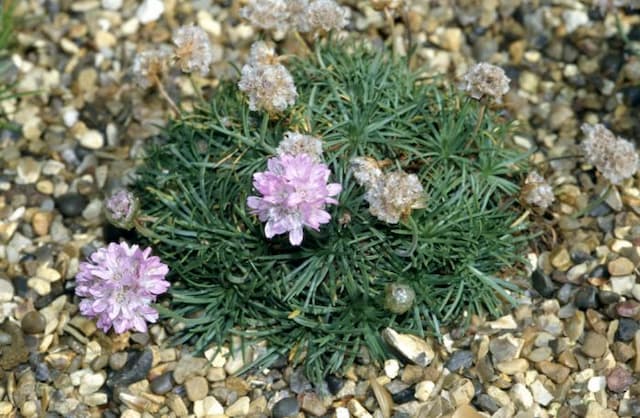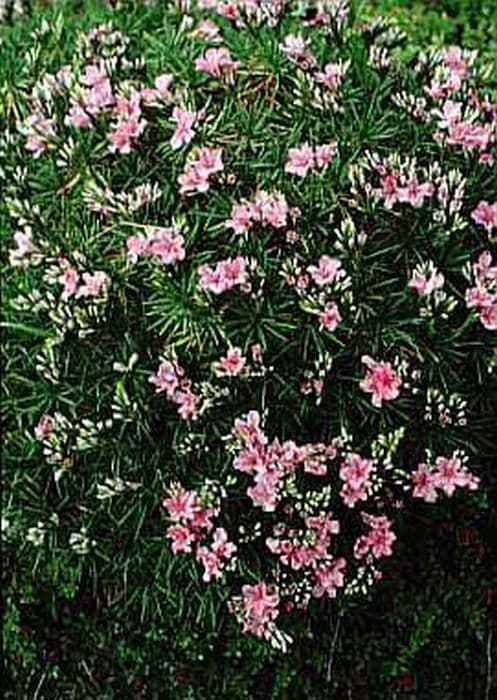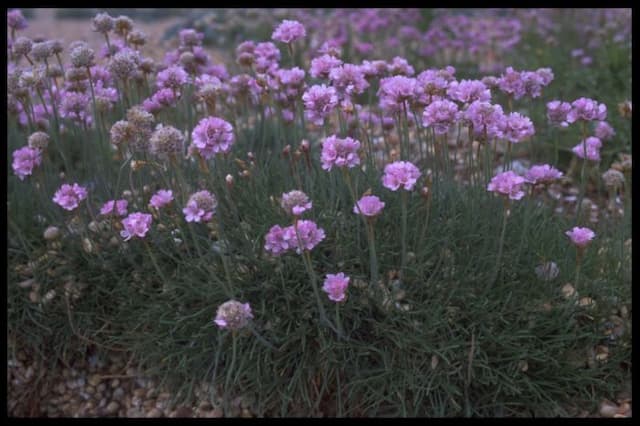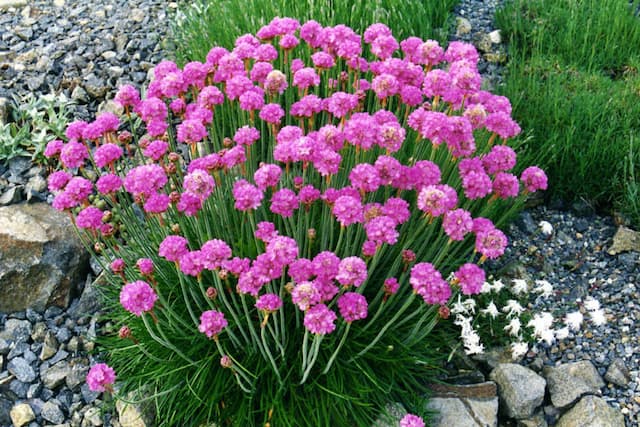Cape Leadwort Plumbago auriculata

ABOUT
Plumbago auriculata, commonly known as Cape Leadwort or Blue Plumbago, is a captivating plant recognized for its profusion of sky-blue flowers. Its appearance exudes a lush, tropical aura, drawing attention in any garden setting. The plant possesses a sprawling habit, with stems that can appear woody over time. The foliage exhibits an attractive, medium green hue, and the leaves show a narrowly oblong shape with somewhat rounded edges. The charm of Cape Leadwort is further enhanced by its flowers, as they bloom in clusters known as inflorescences. Each petite flower is shaped like a tube that flares out into five delicate petals, creating a visual semblance to a phlox. These blossoms are not only notable for their entrancing color and abundance but also their ability to attract a variety of pollinators, such as butterflies. Moreover, Blue Plumbago's aesthetic is accentuated by the subtle nuances in the green of the leaves, sometimes displaying faint hints of blue as an echo of its blooms. This plant's year-round flowering ability, under the right conditions, makes it a continual source of beauty. Its adaptability to being pruned allows gardeners to maintain a desired appearance, promoting denser growth which further accentuates its appeal.
About this plant
 Names
NamesFamily
Plumbaginaceae
Synonyms
Cape Leadwort, Cape Plumbago, Blue Plumbago, Skyflower, Leadwort
Common names
Plumbago capensis, Plumbago coccinea, Plumbago europaea, Plumbago rosea
 Toxicity
ToxicityTo humans
Cape leadwort, which is the most common name for Plumbago auriculata, is generally considered to have a low level of toxicity to humans. However, it is important to note that all parts of the plant can potentially contain compounds that are irritating to the skin and mucous membranes. If ingested, it may cause mild stomach upset, nausea, vomiting, or diarrhea. Skin contact with the sap can result in dermatitis, redness, itching, or blisters in sensitive individuals. Therefore, care should be taken when handling Cape leadwort, especially for individuals with sensitive skin or known allergies to plants.
To pets
Similarly, Cape leadwort has a low level of toxicity to pets. If pets ingest parts of this plant, they might exhibit symptoms such as gastrointestinal upset, including vomiting and diarrhea. As is the case with humans, contact with the skin can cause dermatitis or irritation. While not typically life-threatening, it is still advisable to prevent your pets from chewing on or ingesting Cape leadwort to avoid any potential discomfort or allergic reactions.
 Characteristics
CharacteristicsLife cycle
Perennials
Foliage type
Evergreen
Color of leaves
Green
Flower color
Blue
Height
3-6 feet (0.9-1.8 meters)
Spread
3-6 feet (0.9-1.8 meters)
Plant type
Shrub
Hardiness zones
8
Native area
South Africa
Benefits
 General Benefits
General Benefits- Ornamental Value: Plumbago auriculata, commonly known as Cape Leadwort, is widely used in gardens and landscaping for its beautiful clusters of blue flowers, which add aesthetic appeal to outdoor spaces.
- Drought Tolerance: Cape Leadwort is highly drought-resistant, making it suitable for xeriscaping and ideal for gardens in arid climates where water conservation is a priority.
- Low Maintenance: This plant requires minimal care, thrives in a variety of soil conditions, and generally does not need regular fertilizing or pruning, making it a low-maintenance option for gardeners.
- Fast Growing: Plumbago auriculata has a rapid growth rate, which makes it useful for quickly filling in garden spaces or creating privacy screens.
- Attracts Wildlife: The nectar-rich flowers of the Cape Leadwort attract butterflies and other pollinators, supporting biodiversity and ecosystem health.
- Erosion Control: With its spreading habit and strong root system, this plant is effective at controlling soil erosion on slopes and embankments.
- Adaptability: Cape Leadwort adapts well to both full sun and partial shade, making it versatile for different garden locations and scenarios.
 Medical Properties
Medical Properties- Analgesic: Plumbago auriculata is used in traditional medicine for its potential analgesic properties to relieve pain.
- Anti-inflammatory: The plant has been used to reduce inflammation in various conditions.
- Antimicrobial: Extracts from P. auriculata have shown antimicrobial activity against certain bacteria and fungi in some studies.
- Antifungal: Due to its antimicrobial properties, it may be used in the treatment of fungal infections.
- Wound healing: It is used topically in some cultures to promote wound healing.
 Air-purifying Qualities
Air-purifying QualitiesThis plant is not specifically known for air purifying qualities.
 Other Uses
Other Uses- As a dye: The blue flowers of Plumbago auriculata can produce a blue dye that might be used for artistic or textile purposes.
- As an insect deterrent: The plant is known to repel certain insects and can be planted around the perimeter of a garden as a natural barrier.
- In bonsai cultivation: Plumbago auriculata can be trained into a bonsai form, offering an unusual and striking miniature landscape.
- For privacy barriers: High density planting of this shrub can form a visual barrier in landscaping, providing privacy without the need for fencing.
- As ornamental topiary: Due to its dense growth and ability to withstand pruning, it can be shaped into a variety of topiary forms for garden decoration.
- As a living mulch: When planted densely, Plumbago auriculata can suppress weeds, thereby acting as a living mulch that also adds beauty to garden beds.
- In cut flower arrangements: The bright blue flowers can last several days when cut and used in floral arrangements, adding a splash of color to bouquets.
- As a natural art medium: Flowers and leaves of the Plumbago auriculata can be used in nature crafts, such as pressed flower art.
- For erosion control: The robust root system can help stabilize soil on slopes or areas prone to erosion.
- In butterfly gardens: The blooms are attractive to butterflies, making it a suitable plant for butterfly gardens.
Interesting Facts
 Feng Shui
Feng ShuiCape leadwort is not used in Feng Shui practice.
 Zodiac Sign Compitability
Zodiac Sign CompitabilityCape leadwort is not used in astrology practice.
 Plant Symbolism
Plant Symbolism- Persistence: Plumbago auriculata is a hardy plant that tends to spread and cover spaces if left unchecked. Its ability to flourish even in tough conditions makes it a symbol of persistence and resilience.
- Beauty: With its striking blue flowers, Plumbago, also known as Cape Leadwort, is often associated with beauty and grace. The blossoms are admired for their vivid color and ornamental value.
- Love: The plant's tendency to stick to surfaces due to its sticky leaves can be seen as a metaphor for attachment in relationships, symbolizing love and the bond between individuals.
- Devotion: Cape Leadwort’s long blooming season and the way it continuously covers its growing space can represent steadfastness and devotion.
 Water
WaterCape Leadwort (common name for Plumbago auriculata) should be watered deeply, allowing the soil to dry slightly between waterings. In warmer seasons, watering once a week with about 0.5 gallons for outdoor plants and 8-16 ounces for indoor pots is generally sufficient. Reduce watering in cooler months to every two weeks, adjusting for rainfall and temperature changes. Overwatering can lead to root rot, so ensure good drainage. During periods of extreme heat, check the soil moisture regularly as additional watering may be needed.
 Light
LightCape Leadwort thrives in full sun to partial shade, needing at least 3-4 hours of direct sunlight daily. An ideal spot would be a south-facing garden area or a windowsill that gets ample morning or afternoon sun. In regions with intense sun, some afternoon shade will prevent leaf scorch.
 Temperature
TemperatureCape Leadwort prefers warm temperatures and thrives in environments where the temperature ranges from 60 to 85 degrees Fahrenheit. It can tolerate a minimum temperature of about 20 degrees Fahrenheit but should be protected from frost. Ideal growth is witnessed when temperatures are consistently warm.
 Pruning
PruningCape Leadwort benefits from regular pruning to encourage bushier growth and enhance flowering. Prune back in late winter or early spring before new growth begins, removing any dead or damaged branches. Periodic shaping can be done throughout the growing season to maintain a desired form or size.
 Cleaning
CleaningAs needed
 Soil
SoilCape Leadwort thrives in well-draining, loamy soil with a pH balance ranging from slightly acidic to neutral (5.5 to 7.5). The best soil mix for Cape Leadwort should contain a combination of garden soil, compost, peat, and coarse sand or perlite to enhance drainage. Regular incorporation of organic matter can increase fertility and encourage robust growth.
 Repotting
RepottingCape Leadwort should be repotted every 2-3 years to prevent root-bound conditions and to replenish its soil with fresh, nutrient-rich mix. It is best done during the spring or early summer when the plant is actively growing. Carefully handling the roots to avoid damage will ensure a smooth transition.
 Humidity & Misting
Humidity & MistingCape Leadwort prefers moderate humidity levels but is quite adaptable and can tolerate lower humidity. Aim for ambient humidity around 40-50% for optimal growth, although it can withstand variations as long as it receives adequate watering.
 Suitable locations
Suitable locationsIndoor
Place Cape Leadwort in bright, indirect light and ensure good air circulation.
Outdoor
Plant Cape Leadwort in full sun to part shade, protect from harsh winds.
Hardiness zone
9-11 USDA
 Life cycle
Life cycleCape Leadwort (Plumbago auriculata) begins its life cycle as a seed, which germinates in warm, moist soil conditions with ample sunlight. Upon germination, a seedling emerges and establishes a root system, gradually developing into a young plant with characteristic pointed, green leaves. As the Cape Leadwort matures, it enters the vegetative stage, where it undergoes rapid growth and foliage expansion, producing long, thin stems that can climb if supported or sprawl across the ground. The reproductive phase is marked by the production of numerous clusters of blue to white flowers, each with a tubular corolla attracting pollinators such as butterflies and bees to facilitate cross-pollination. Once pollination occurs, the flowers develop into small fruits containing seeds, completing the reproductive cycle and allowing for the dispersal of seeds for new plant generation. Eventually, older plants may experience reduced vigor, potentially entering a phase of senescence where growth slows and the plant may die back, although in favorable conditions Cape Leadwort can be a robust, evergreen shrub.
 Propogation
PropogationPropogation time
Spring to Summer
Propogation: Plumbago, also known as Cape Leadwort, is often propagated during the warmer months when the plant is actively growing, particularly in spring or early summer. The most popular method of propagation for Plumbago auriculata is through semi-hardwood cuttings. A semi-hardwood cutting is taken from the current year's growth that has begun to mature but is not fully hardened. These are typically 4 to 6 inches (about 10 to 15 centimeters) in length. The lower leaves of the cutting are removed, and the cut end is often dipped in rooting hormone to encourage root development. The prepared cutting is then inserted into a pot filled with a well-draining rooting medium, such as a mix of peat and perlite or sand. The pot is kept moist and in indirect light until the cuttings root, which usually takes several weeks. Once rooted, the cuttings can be transplanted into individual containers or in the garden.









